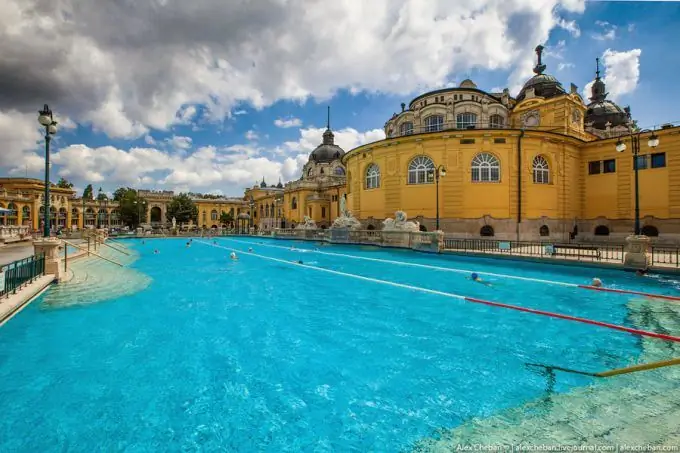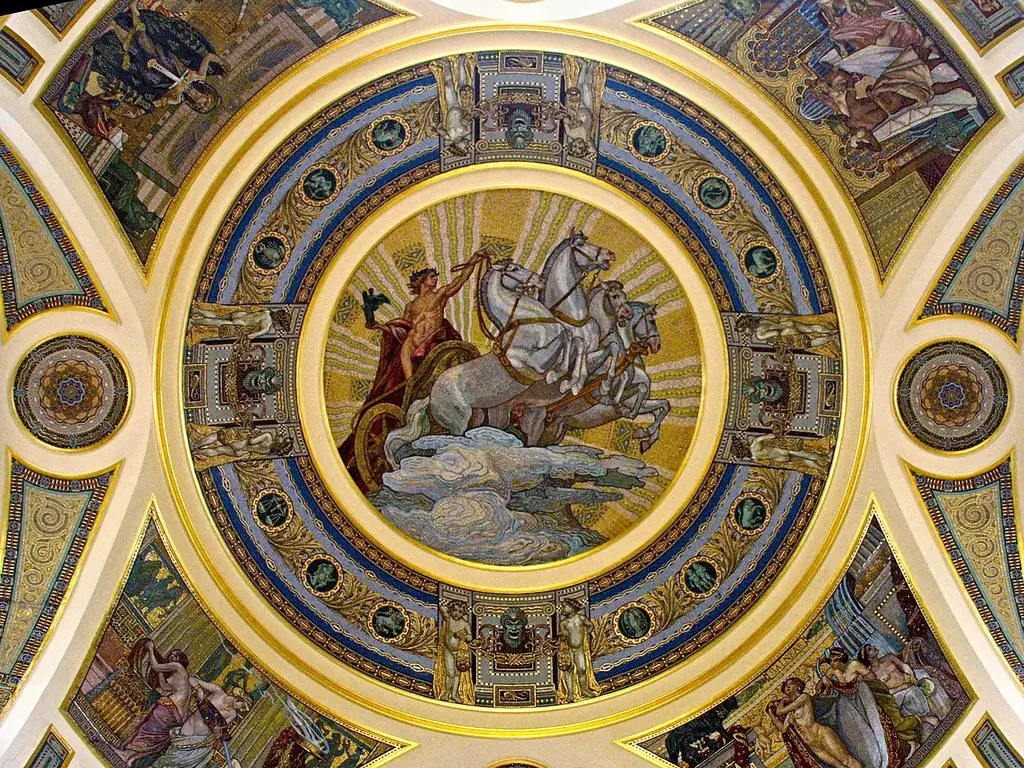Széchenyi Bath is a medical wellness complex located in the center of Budapest. Here everyone can choose the necessary water procedures for themselves. A wonderful architectural complex, a successful location of the baths attracts the attention of tourists from all over the world.

The history of the Szechenyi baths
Hungary is one of the oldest states in Europe. The central attraction of the capital of Hungary - Budapest - is the famous Szechenyi baths. Baths is a health-improving complex and one of the unique resorts in Europe. The emergence of the bath is associated with the need to create a medical center in Budapest, which the city authorities have been talking about for a long time.
The developer of the bathing project was the professor of the Technical University of Budapest Diezio Ziegler. He presented the project in 1868. However, the local authorities could not agree on the place and time of the construction of the new building for a long time. The date of the beginning of construction is considered to be 1903. By this time, the professor had already resigned and appointed Ede Dvorak to his place.
The first building of the complex was the "Artesian Bath", which was created in 1881 by Vilmos Zsigmondi. An engineer by profession, who spent a lot of time in the mountains and mines, discovered the existence of thermal springs in Budapest. In place of one of them, he cut a well. The first bath was the starting point for Ziegler's project.
The official inauguration of the Széchenyi Bath took place in 1913. Since that time, "Sechka" has become the largest spa resort in Europe. The first year of Széchenyi's work yielded tremendous results. The baths were visited by over 200 thousand people. However, the outbreak of the First World War led the country to an economic crisis. The baths stopped generating good income, and some buildings were destroyed.
The restoration of the resort began in the mid-1920s. By this time, several new structures were added to the bathing complex, the central building was rebuilt, which increased the flow of visitors. In the 1940s, the baths took another hit. The new war did not affect the work of the bath in the best way. The number of visitors did not decrease, and the income of the resort did not grow. However, the military hard times "Sechka" endured a little easier.
The building, restored after the war, received new territories. A common mud department was opened, workers discovered a geothermal spring with a water temperature of 77 degrees above zero. This is the hottest spring in Europe. Since that time, the government began to spend less on heating water and baths, and the number of visitors has increased.

Description of the Szechenyi baths
The Szechenyi Bath was built in the classicism style. Massive columns, balustrades give the building a solemn look. Some of the internal and external elements of the complex are built in the neo-Renaissance style. The bathhouse is a building with mirrored pools on both sides. The existence of two identical pools was explained by the need for separate bathing of men and women. No such division is currently envisaged.
In the interior and exterior decoration of the premises, there are water motives. The central dome is decorated with the image of the sea king Triton. Mermaids, sea monsters, shells and fish are painted on the stained glass windows and walls of the building. At the entrance, visitors are greeted by the Centaur - Fisherman of Tritons fountain. In the central hall, the walls between the windows are decorated with paintings of bathing scenes in various styles. The central picture is framed by images of the zodiacal constellations.
The images of fountains, bathing scenes, sea monsters were made by prominent Hungarian sculptors and painters. Visitors will be able not only to take health baths, take advantage of medical procedures, but also enrich themselves spiritually by looking at the interior decoration of the premises.

Tours and visitor information
The Széchenyi Bath is not a museum, but at this resort everyone can order a paid excursion. If the visitor has a special tourist card, then a visit to the bathhouse will cost him half the price. The entrance fee varies depending on the time of year and the opening hours of the bath. The exact cost and opening hours of the bath should be checked on the official website.
The Szechenyi Bath is located at 1146 Budapest, 11 Allatkerti Street.
Currently, the bath is one of the largest and most visited resorts in Europe. A visit to the bathhouse helps tourists and residents of the city to improve their health and enjoy their rest.






